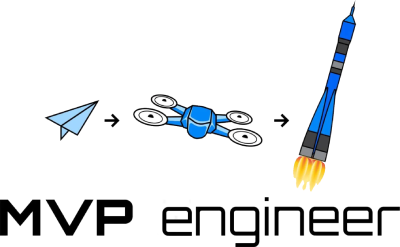
A two sided marketplace is a product or website for two distinct demographics that engage in an economy based on their different needs. It can take many forms. Here I'd like to explore the types and what makes a successful marketplace MVP.
A two sided marketplace is a product or website for two distinct demographics that engage in an economy based on their different needs. It can take many forms. Here I'd like to explore the types and what makes a successful marketplace MVP.
Sometimes a two sided marketplace is simply buyers and sellers of goods or services. Airbnb, fiverr and uber are obvious examples. Generally there is a niche being served. But it can also be different types of services, and the payment could go either way, or simply just a connection. Tinder, ModelMayhem, or a podcast guest booking service would be examples of this. At model mayhem, sometimes the photographer pays the model, other times the model pays the photographer. Sometimes it's just "trade for print" or both sides work for free to expand their portfolio. You can imagine something similar in a podcaster marketplace where some guests are famous, and other hosts have large audiences. The underlying thread to all two sided marketplaces are two core demographics that have very different needs and a connection benefits both sides.
There is a lot of commonality to creating a successful two sided marketplace as producing powerful network effects. Briefly, making it valuable to a single user, or leveraging existing networks and solutions.
The next concept specific to these marketplaces is liquidity. When a new buyer, or new user on one side is presented with options, there must be a few meaningful choices for the user to have a valuable experience. This is achieved with huge scale, or small enough niche. If you choose a small enough need, and get 100 sign ups, this can be effective in solving new user needs. So starting Task Rabbit in its current form would be difficult, but only household organization in NYC might be a better starting point. Delight the users, get some clout, then expand. Reach liquidity and there will be happy users. Without it, repeat visitors will be rare.
You're a marketplace with a brand. It's important your site imposes some opinions on interactions and user flow. This takes two forms. Visual consistency. Profiles shouldn't allow a ton of user generated content. In its later years, Myspace allowed full user customization, and each creator (musician) page looked different, backgrounds, fonts, scroll bars. It was almost another website clicking around. Maintain consistency by imposing restrictions. Secondly, experiential consistency. If each vendor or member on the site has a different process to engage, this is jarring to repeat customers. Imagine hiring that organizational helper on task rabbit. She links you to a google form questionnaire and a paypal link to hire. Then another wants to get on the phone and only takes cash. Get opinionated. You're the expert in this marketplace, dictate how the engagement occurs, and enforce it.
Own the transaction. The primary value you bring as the marketplace creator is the connection between the two sides. When monetizing, this means the initial connection is the most valuable. Some marketplaces hide people's identity: Upwork for example. This means agents on the other side can't contact them outside of the network and circumvent value capture. Many marketplaces reduce fees as time in the relationship is longer. It's a balance that the marketplace hopes status quo is stronger than setting up payment outside and violating terms of service. This is one area that needs special attention to assure you are in fact getting your value capture in the marketplace you just spent a lot of effort building.
Two sided marketplaces are a common type of MVP that have their unique challenges. Hopefully this elucidated some strategies you can use to build out yours. Reach out directly if you need some personalized guidance.

